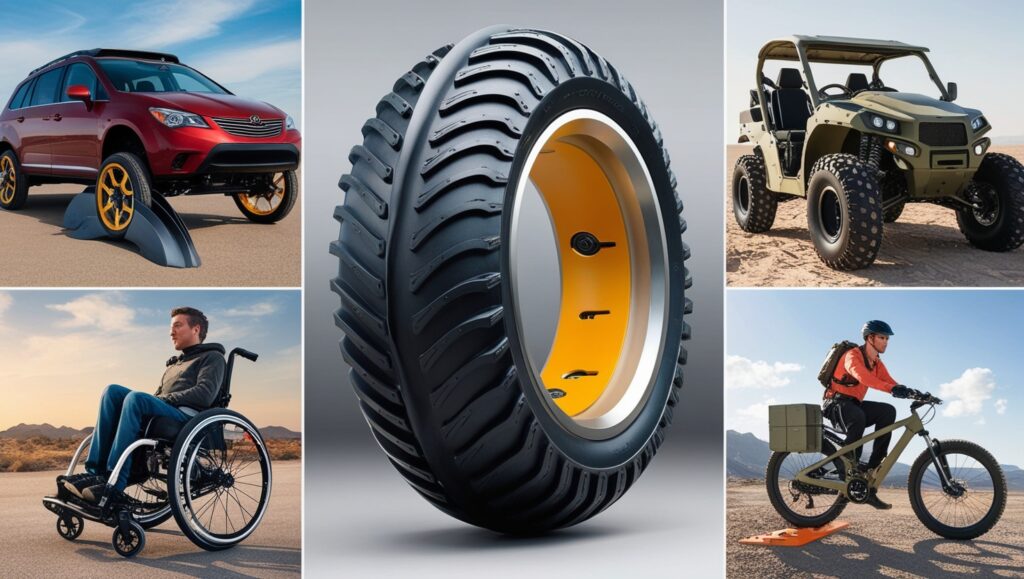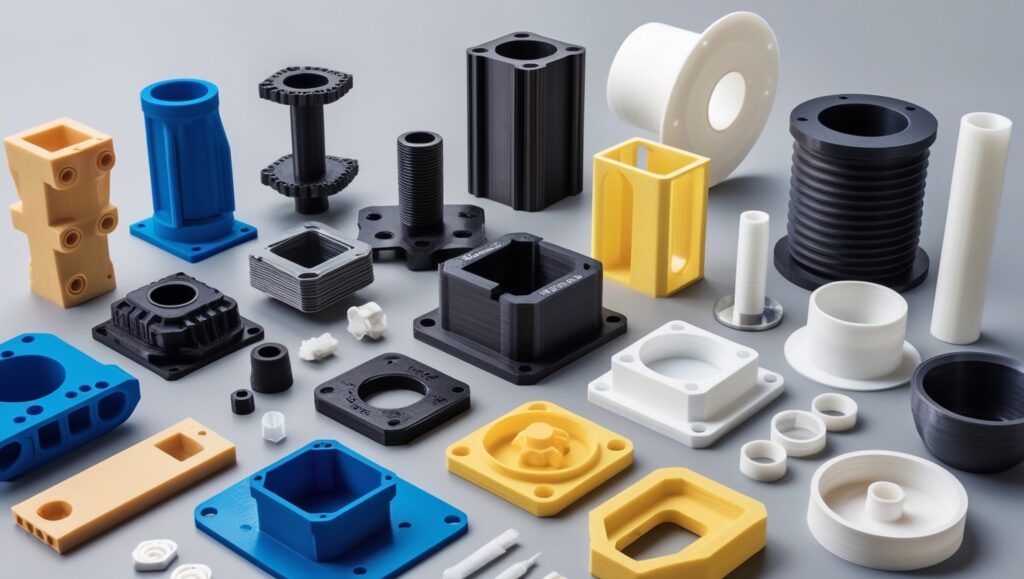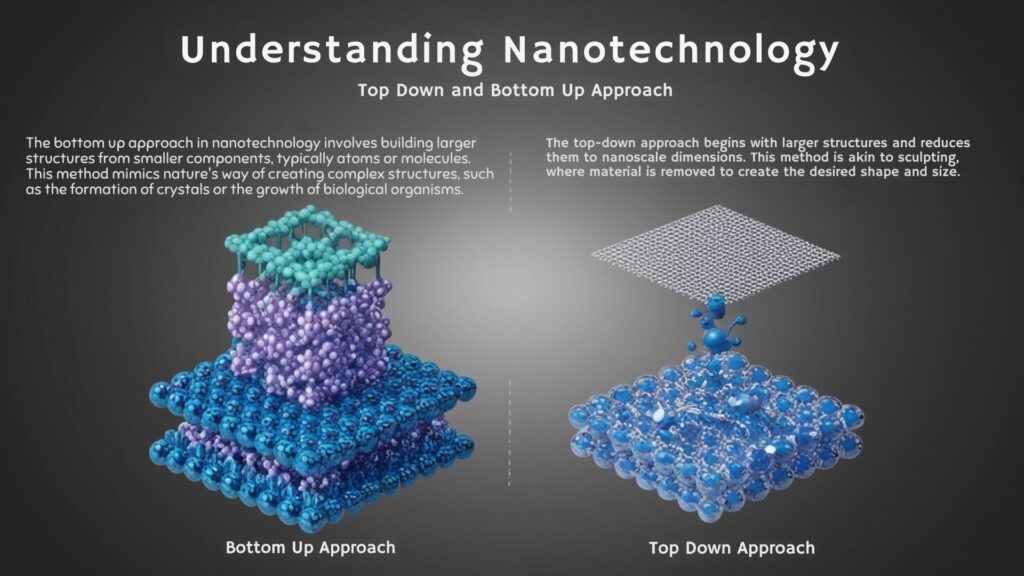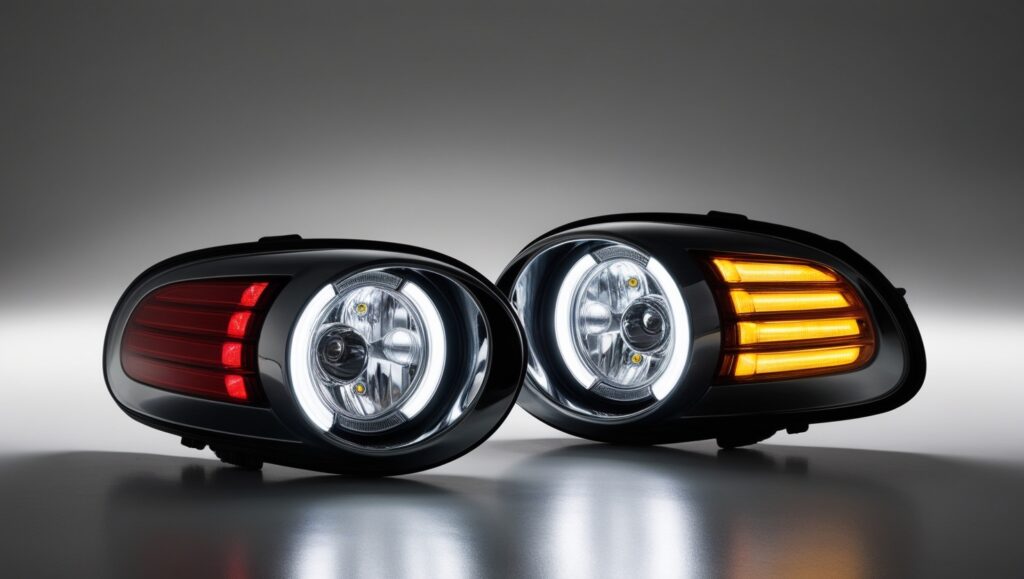
Lighting system
The lighting system in an automobile/car lightings includes the following:
- Headlights,
- Low beam headlights or Dipped headlights
- Full beam headlights
- Taillights
- Parking Lights
- Daytime running lights
- Fog Lights
- Blinker lights signal lights, indicator lights
- Flashing signal lights
- Hazard lights
- Brake Light
- Backup Lights / Reverse signal lights
- Interior Lights / Driving Lamps
Let us discuss the vehicle’s lighting arrangement. Many people think of this as a simple issue. However, it is critical to be aware of all of the car’s lights and how to utilize them, especially while driving at night, in the rain, or fog.
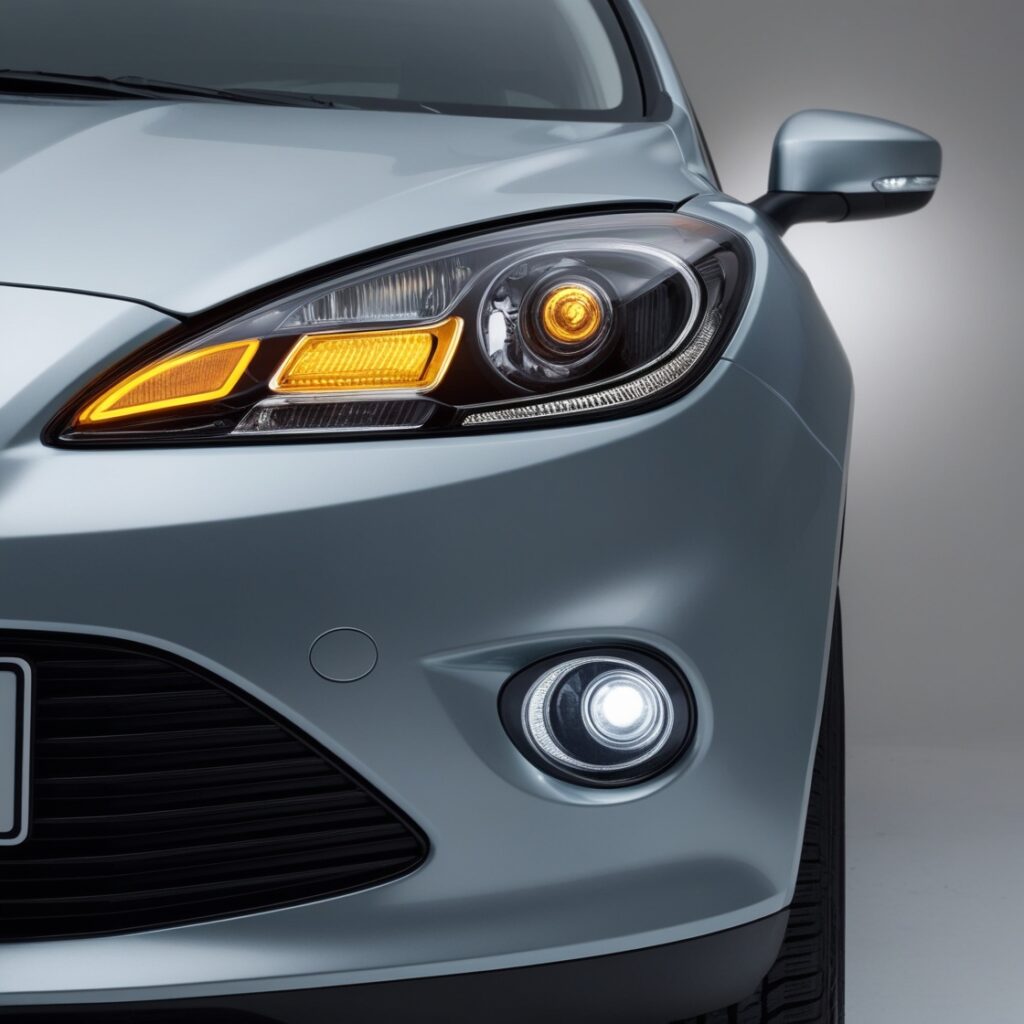
The Car Lightings and How to Use Them
The numerous lights on an automobile have distinct purposes, such as assisting the driver or signaling to other cars. Accidents can occur when products are used incorrectly or not at all. It is critical to distinguish between the various lights and know when to utilize them.
Types of Car Headlights
Headlights are one of the essential features of an automobile when traveling down a dark and gloomy road. It illuminates the road ahead, notifies oncoming vehicles of your presence, and does a lot more. Carbide lamps, which were employed in the early days of automobiles, have led to today’s laser lights. Manufacturers employ a variety of headlights. Today, we will go through the five most common types:
Halogen Headlights
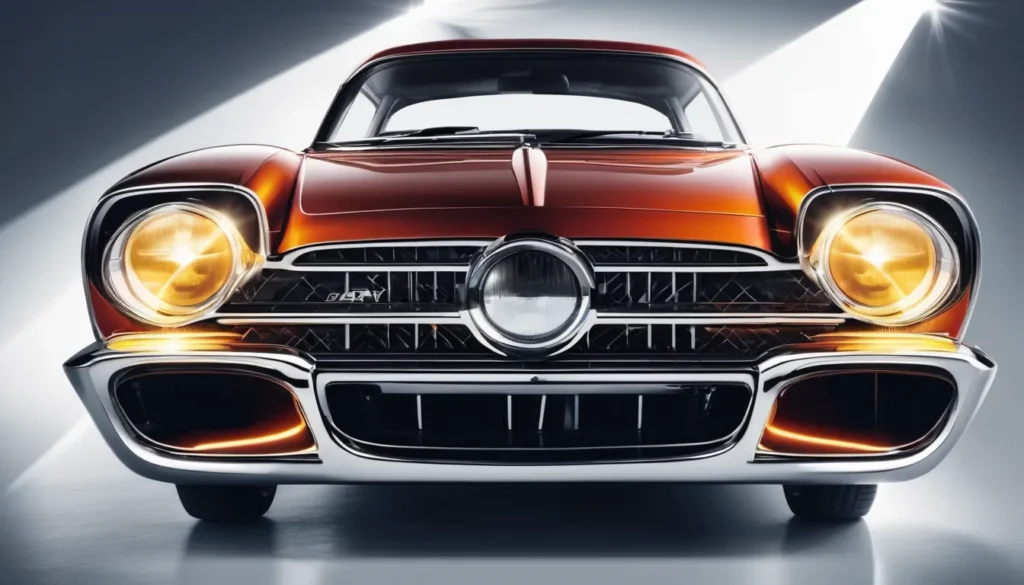
Halogen headlights are the most common headlights found in practically every automobile. A halogen lamp bypasses power via a tungsten filament in a glass capsule filled with halogen gas. Because the gas is particularly heat resistant. It begins to heat and light when an electric current is applied to the filament. This is why the light emitted by halogen lights is yellow.
Halogen lamps are inefficient because much energy is lost as heat. As a result, the light throw is only around 100 meters long.
Xenon or HID Headlights
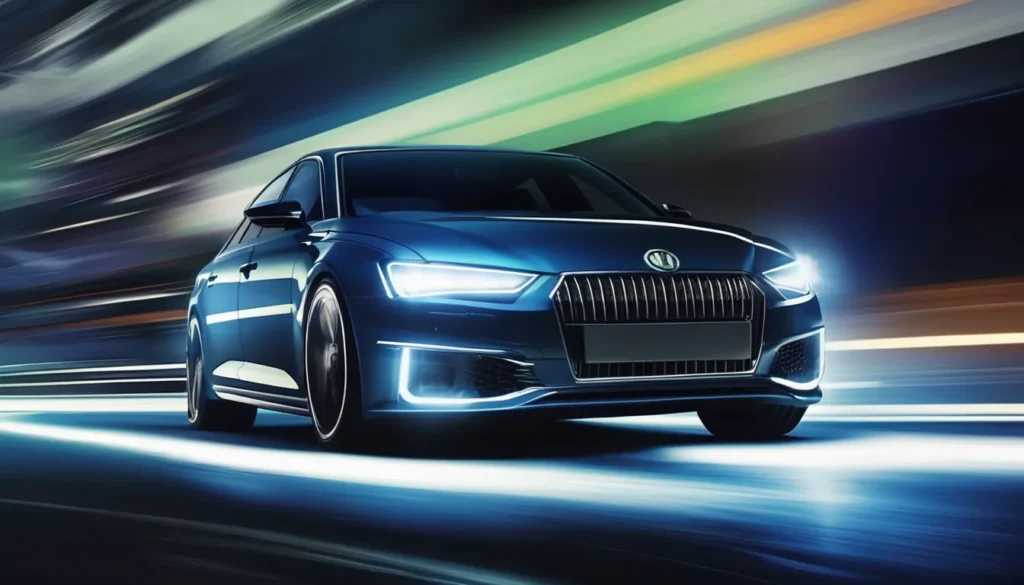
The high-intensity discharge (HID) or Xenon headlamp is comparable to the CFL (compact fluorescent light) bulbs used in our houses. Xenon headlights do not require a filament. Instead, it generates a high voltage region between two electrodes. Xenon gas is used to fill the empty volume. Because these bulbs need time to heat up, it takes longer to achieve their full brightness.
However, they generate a bluish-white light when they reach their maximum brightness. Because they take some time to warm up, Xenon headlights are utilized with another type of lamp that serves as a high beam.
HID headlights are far more powerful and brighter than traditional halogen headlights with a 200 meters throw range.
LED Headlights
Light-emitting diodes, or LEDs, as they are more often known, function by passing energy through them. LEDs have a reasonably easy manufacturing process; they do not require warm-up time and produce nearly no heat. They use the least amount of energy and provide the best light. They are simple to install on any headlight and light up quickly.
Another advantage is that they may be used in various ways and forms, and they can throw light up to 300 meters. You have probably seen LED technology on high-end vehicles that employ LEDs to create various designs.
Matrix HeadLights
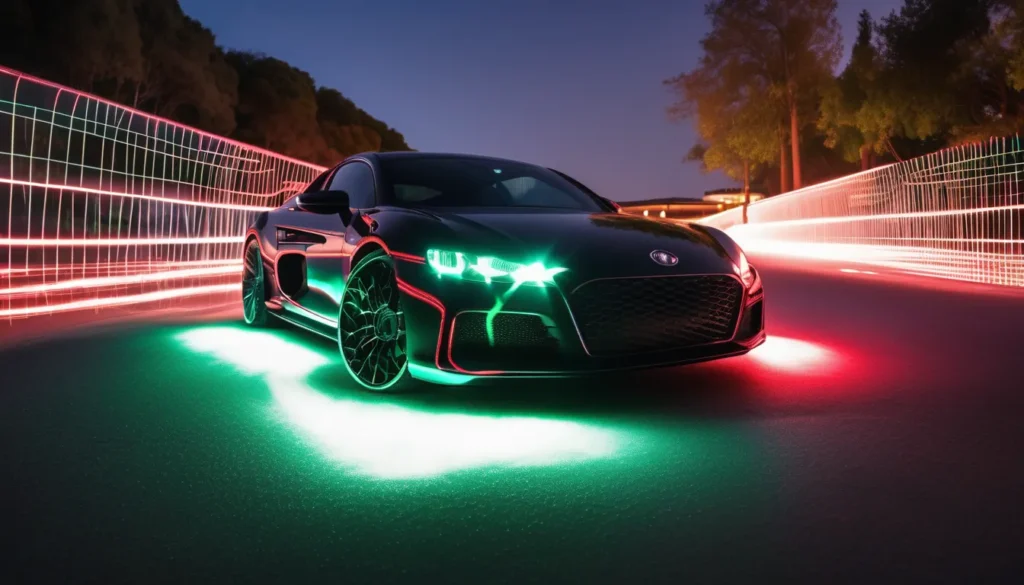
Matrix lights are often referred to as “pixel lighting.” A headlamp comprises several separate individual LEDs, each regulated independently. Behind the inner rearview mirror is a camera that detects automobile headlights and taillights. When the system identifies a vehicle, it shuts off the particular LED to prevent other drivers from being blinded. As a result, car headlights do not project light vertically and horizontally. This allows a motorist to utilize high beam headlights even when incoming traffic is present.
Laser HeadLights
Laser lights are the most modern kind of headlamp technology on the market today. They are the greatest in their class and the most expensive. Laser lights use lasers to ignite gas. As a result, the gas lights are extraordinarily bright. The most notable benefit of laser lights is that their headlight throw is substantially more significant than any headlamp form. These are generally seen on high-end luxury vehicles or are offered as an option, but they are also much more expensive. Laser lights can illuminate approximately 600 meters of the road ahead.
These are the five most common types of headlights used by manufacturers. As with any other technology, the technology will advance with time. It will be able to transfer wealth to cars that are considerably less expensive.
Types of Car Lightings
Almost all automobiles, irrespective of make or model, are equipped with the same set of lights. Though their controls may alter from one vehicle to the next, their arrangement will be almost the same. Each set of automotive lights has a particular purpose and is accompanied by a set of regulations that you must learn and observe. So, without any further prior preparation, let’s look at the car lights you have available.
Headlights
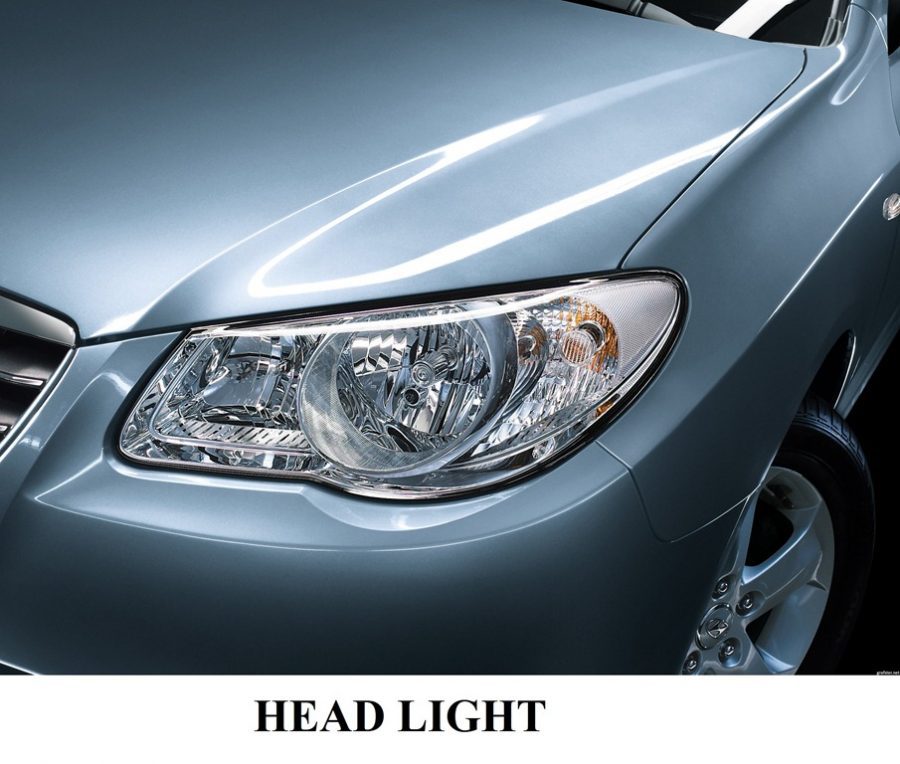
Headlights sufficiently illuminate the roadway to allow for safe night driving. There are usually two or more beams in these. For driving, one beam offers the most illumination. The other beam is constructed to deflect to the ground and the side of the road. This beam becomes necessary to reduce glare when passing other cars on the road.
The headlight features two filaments, one for the higher beam and one for the lower beam. The circuit from the battery to the headlights is completed when the light switch is pulled out. The foot selector switch is used to complete this circuit. There are two positions on this switch: low beam and high beam. These are also known as high beams and passing beams.
These lights allow the driver to see the roadway in the dark while also signaling that a car is present to other motorists. Low beams provide a light distribution to give adequate forward and lateral illumination without blinding other road users with excessive glare. High beams provide an intense, center-weighted light distribution with no particular glare control. They should only be used when no visible cars are in front of you (coming or going).
Low beam headlights (Dipped headlights)
Low beams, unlike full beams, provide enough light to see where you are going without creating excessive glare that might blind oncoming vehicles. Low beams are required for driving at night. However, they have also been shown to increase visibility and safety when used during the day, such as in inclement weather (rain, snowfall, cold, or fog) or just after dawn. These lights allow the driver to see the road in the dark while also alerting other motorists to the vehicle’s presence.
Low beams provide enough light to give forward and lateral illumination without blinding other road users. High beams generate a bright, center-weighted light distribution with no glare control. They should only be used before dusk when no visible vehicles are in front of you (coming or leaving). This is because it might be more difficult to spot other vehicles at these times.
Full beam headlights
Full beam headlights, like low beam headlights, aid the driver in seeing the road in the dark. It also lets other drivers know where you are. Full-beam headlights produce a powerful, center-weighted light distribution with several glares. As a result, they should only be used when visibility is poor. There are no other cars visible in any direction, or when you are at least 150 meters from incoming traffic and require full beams to see the road.
Turning off your high lights in certain conditions is critical to avoid blinding or distracting approaching vehicles. This includes when automobiles are approaching you, even if they are on the opposite side of the highway divider; in fog, when light reflection can make it impossible to see; and on bends, slopes, and junctions, where you have no way of knowing if another car is approaching you.
Taillights
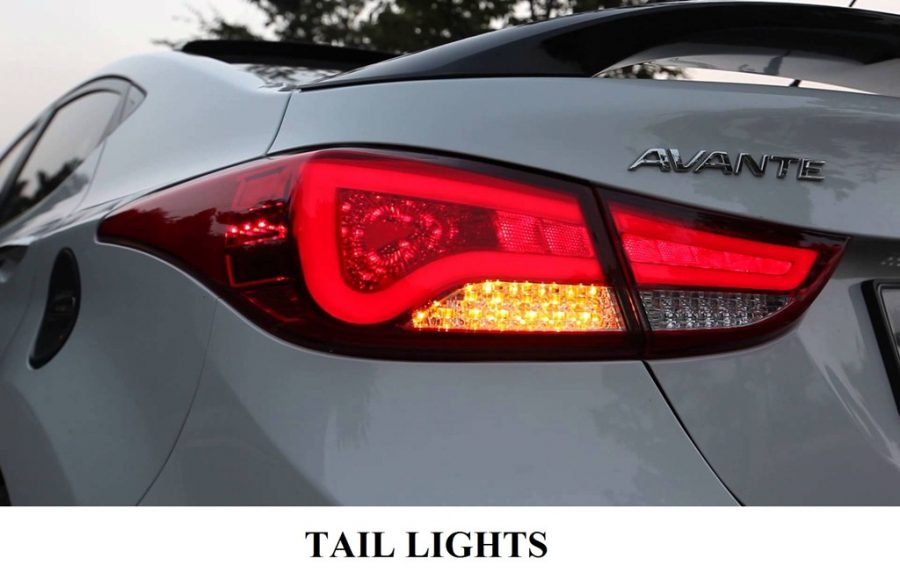
Taillights reveal the back of a car, including the license plate, so that other drivers can see both the vehicle and the license plate. Tall lights are typically equipped with stoplights that flash red signals if the brakes are engaged.
This allows cars behind you to understand that you are there and how far ahead you are.
Parking Lights
Low-intensity parking lights are frequently placed in front of the car in addition to the headlights, either as separate units or as part of the headlamps.
Daytime running lights
These lights are found in both the front and back of the vehicle. They usually turn on automatically, but you may turn them off in certain vehicles. They are meant to make you more visible to other drivers, but they may be distracting in oncoming traffic.
Daytime running lights, not to be confused with low beams, will make you more visible to other drivers. They typically include lights at your vehicle’s front and back that automatically turn on when the engine is started. Local laws may vary, but a current vehicle is generally constructed to suit local regulations.
Fog lights
These lights are usually set low near the headlights to prevent light from refracting from the fog and flashing back at you (the driver). These should only be used when standard headlights are not working due to fog.
Fog lights are frequently mounted low on the front of the automobile, near the front bumper, because of their distinctive flat and broad beam form. The form of the beam cuts through the fog to illuminate the road surface. At the same time, the location prevents light from being reflected and blinding the driver. Cars also include at least one rear fog light to aid in detecting your vehicle by other drivers. Fog lights are so bright that they might disturb other drivers. Thus, they should only be used when standard headlights are useless, such as in fog or snow (but not in the rain).
Blinker lights/Signal lights/Indicator lights
These are situated in the front and back of the automobile, beside the head and taillights, and are sometimes known as turn signals or “blinkers.” Many automobiles have blinker lights mounted to indicate when a vehicle has stalled on the highway or pulled off to the side. The flashing light is far more visible than a constant light, and it serves as a warning to oncoming motorists.
Flashing signal lights
The direction in which the vehicle is about to turn is indicated by flashing signals or turn signal lights on either side of the vehicle, front and back, to other vehicle drivers and road users. The lights flash roughly 80 times per minute when they are turned on.
When the front and rear lights on the right and left sides are engaged by the turn signal light switch assembly, the turn signal lights are connected to work in a flashing manner. The turn signal flasher is in charge of flashing the dual signal lamps. The circuit is opened and closed by a bimetallic strip in the flasher. The bimetallic strip warms up and expands as the current passes across it, opening the circuit. The strip compresses as it cools, re-closing the circuit.
When turned on, they alert other drivers that you will be turning (in the direction indicated by the signal) shortly. They will most likely be slowing down to do so.
Hazard Lights
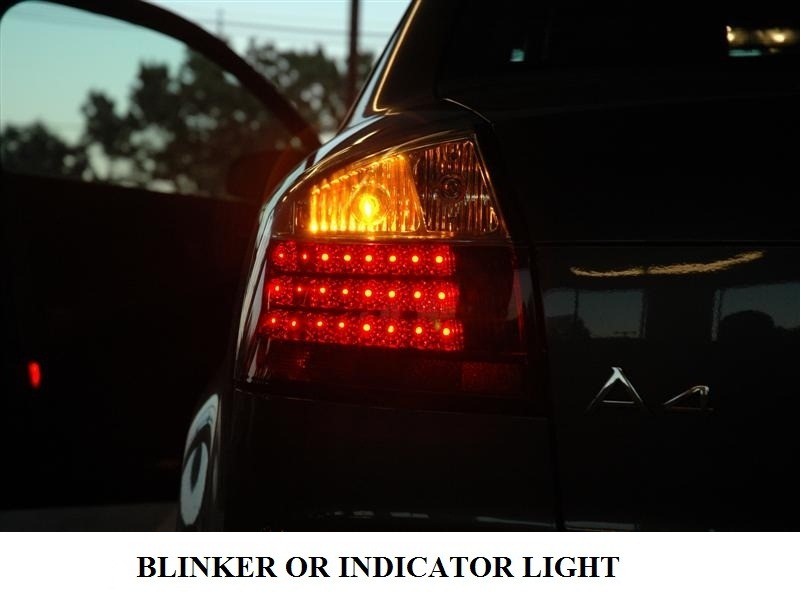
They are situated in the front and back of the car and are also known as flashers. Your danger lights are manually activated, flashing automobile lights. They should only be used in the event of an emergency. When switched on, they emit a flashing signal to alert other drivers that you are having trouble, are in distress, or are in danger (rocks in the road, any form of disturbance). They should never be used as stop signals or unlawful parking permits, but solely as warnings of distress or traffic concerns.
Brake Lights
They are located to the side of your rear lights and communicate that you’re slowing or stopped to oncoming traffic. You do not have to worry about abusing them because they are only triggered when you press the brakes. You must, however, ensure that they are kept in good working order and do not burn out.
Backup Lights or Reverse Signal Lights
Many cars have backup lights mounted as a method of signaling when reversing. When the driver changes into reverse gear, these lights illuminate. This links the backup lights to the battery by closing a switch attached to the selecting lever.
Interior Lights/Driving Lamps
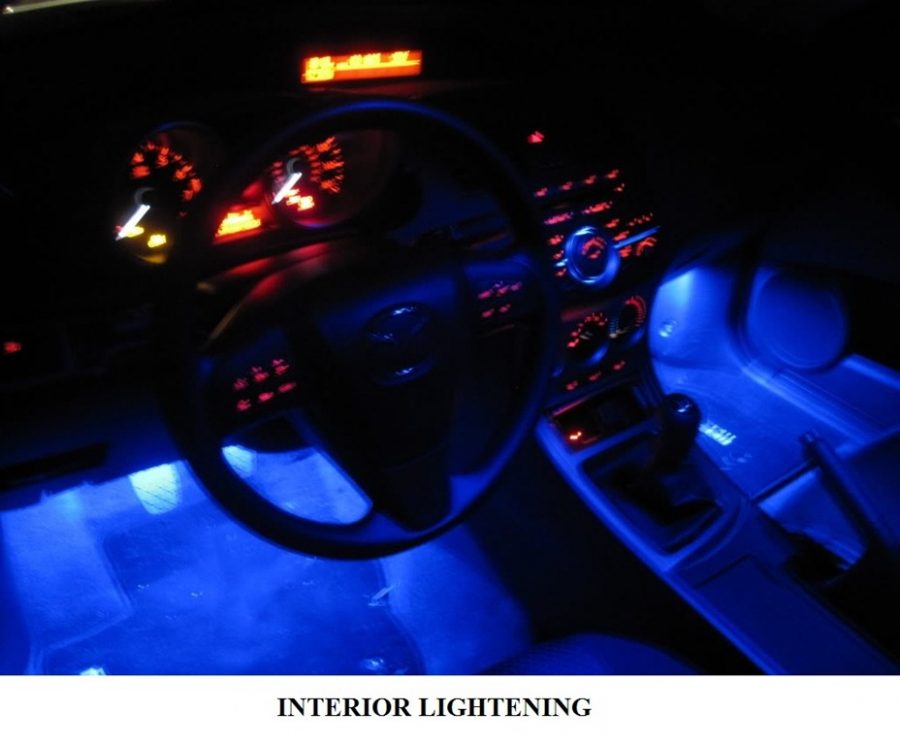
Instrument panel lights, different warning signs, and courtesy lights that turn on when a car door is opened are examples of interior lighting features in a vehicle.
The lighting system also comprises interior lights that illuminate the compartments in which the passengers travel and specific lights that highlight the keyhole for the ignition key or the interior of the glove compartment. Some cars additionally have map lights, trunk compartment lights, radio dial lights, cloak lights, and engine bonnet lights. They should never be used for extended periods.
In addition, one or more unique lights are included as driving signals. Red signal light indicates when the high beams of the headlights are on, when it is possible to go into overdrive, when the lubricating oil pressure is low, when the cooling water temperature is too high or too low, or when the generator is not charging.
FAQ’s
Which lights should be used during the day?
In typical weather conditions, daytime visibility is usually good, so you will not need to utilize any additional lights. However, many modern vehicles employ daytime running lights to increase visibility to other drivers.
Which light should I use just after dawn or right before sunset?
Visibility begins to decline just after sunrise and shortly before dusk, so use your low lights at these times of the day.
Which light should I use at night?
Driving at night is more complex and demands more concentration than driving during the day. As a result, it is critical to balance your need for light to increase visibility and the demands of other road users. In other words, use low beam headlights when other cars are nearby and high beam headlights when you are at least 150 meters away from other automobiles.
In the fog, which light should you use?
Driving in fog might be difficult at first. It’s critical to utilize your fog lights to improve visibility and safety for you and your passengers. Additionally, remember to allow more significant space between yourself and other vehicles and to use the right-hand edge of the road as a guide (or the left-hand edge in the UK) as a guide, so you do not follow your natural affinity to drift into the center of the road when visibility declines.
In the rain, which light should you use in the rain?
Your visibility determines this: Can you see more than 100 meters ahead of you in the rain? If this is the case, it is advised but not required to keep your low beam headlights turned on. However, if you cannot see more than 100 meters ahead of you, you should turn on your low beam headlights so that other cars can see you. If visibility is really low, you may also use your fog lights, but remember to switch them off when visibility improves.

